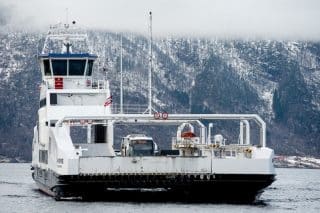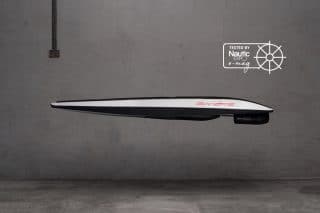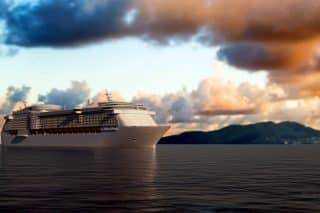Initially designed for Groningen Seaports, Damen Green Solutions’ innovative InvaSave has successfully completed shipboard testing aboard containership Henrike Schepers.
InvaSave is a containerised ‘plug & play’ unit designed for ports and able to treat ship’s ballast water. It can be placed aboard a service barge or moved around a port on a trailer or pontoon. The system uses special filtering and UV technology and does not contain chemicals or hazardous substances.
A Port-Based Alternative
“InvaSave is capable of providing a ballast water treatment backup in a port in the event of a failure of a vessel’s on board treatment system – and it can also serve as a mobile, port-based alternative for ship owners who may not want to retrofit an on board treatment system,” Damen Green Solutions product manager Matthijs Schuiten told NauticExpo e-magazine, adding: “It could also be deployed in a port with a sudden outbreak of marine pests.
A single InvaSave unit can treat a maximum 300m3/h
“As a performance indicator for the system, a single InvaSave unit can treat a maximum 300m3/h, and the system can run uninterrupted for weeks if the fuel tank is filled up every 24 hours,” Schuiten continued. “A typical ballast water treatment session takes 10 hours to empty a ship.
Marine Pest Outbreak
“In terms of a marine pest outbreak in a port there are various scenarios in using InvaSave:
1). Where there is a marine pest outbreak in the port of ballast water intake.
On top of ballast water exchange, or treatment of the vessel itself, the port authority could advise the vessel to take in ballast water via the InvaSave. This pre-treatment will provide an extra IMO-certified protection to prevent taking pests on board.
2). Where a vessel is to discharge ballast water from a port with a known marine pest outbreak.
Again, on top of ballast water exchange, or treatment of the vessel itself, the port authority could advise the vessel to discharge ballast water via the InvaSave. This after-treatment will also provide extra IMO-certified protection against discharging pests.
3). A water body needs to be cleaned from a pest.
“The water is pumped through the InvaSave and leaves it IMO-certified free of pests. Of course, the feasibility of this is to be determined on a case-by-case basis – what is the water volume, is the pest floating in the water or attached to hard surfaces, etc?
Multiple Tests
“The tests aboard Henrike Schepers saw ballast water taken aboard untreated, with the efficacy of InvaSave’s technology validated on discharge,” Schuiten noted. “The results met the D2-Standard of the IMO Ballast Water Management Convention (BWMC) in all aspects. This also includes a test series conducted with the high-sediment waters of the UK’s River Hull and River Thames. Test protocols were in line with IMO BWMC test guidelines and additional requirements of the Dutch flag state – all testing was conducted by MEA-nl.
The system is robust and works under all relevant circumstances, regardless of the composition of the ballast water
“IMO type approval is expected to be obtained later this year and a patent is pending for this innovative system,” Schuiten stated, adding: “An overall and important principle is that the system is robust and works under all relevant circumstances, regardless of the composition of the ballast water. As more and more countries are ratifying BWMC, it could enter into force in 2017, but in any case, it’s only a matter of time.
“It’s not just ships, BWMC is also relevant for all port authorities, who could face congestion problems if they don’t have a contingency/emergency service in place. Damen is co-operating with service providers in ports to provide InvaSave.”
At Work In Netherlands
The production prototype was displayed at Delfzijl’s ‘DelfSail’ sailing festival in late June/early July – and Groningen, responsible for the Dutch ports of Delfzijl and Eemshaven, is now the first port authority to provide an InvaSave service.
“Our location on the Wadden Sea, a UNESCO World Heritage Site, means that we have a responsibility to push forward the progress of sustainable shipping,” said Groningen Seaports sustainability co-ordinator Bart van der Kolk. “We are fully prepared for the ratification of BWMC and this innovative solution is likely to appeal to other ports, as well as ship owners, especially those operating close to sensitive locations such as World Heritage sites and particularly sensitive sea areas.”






